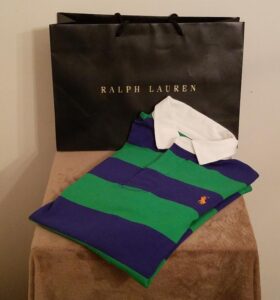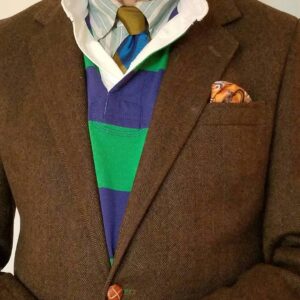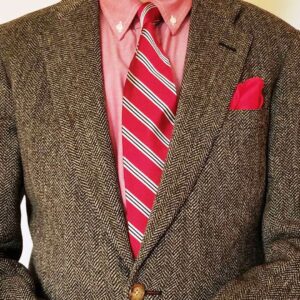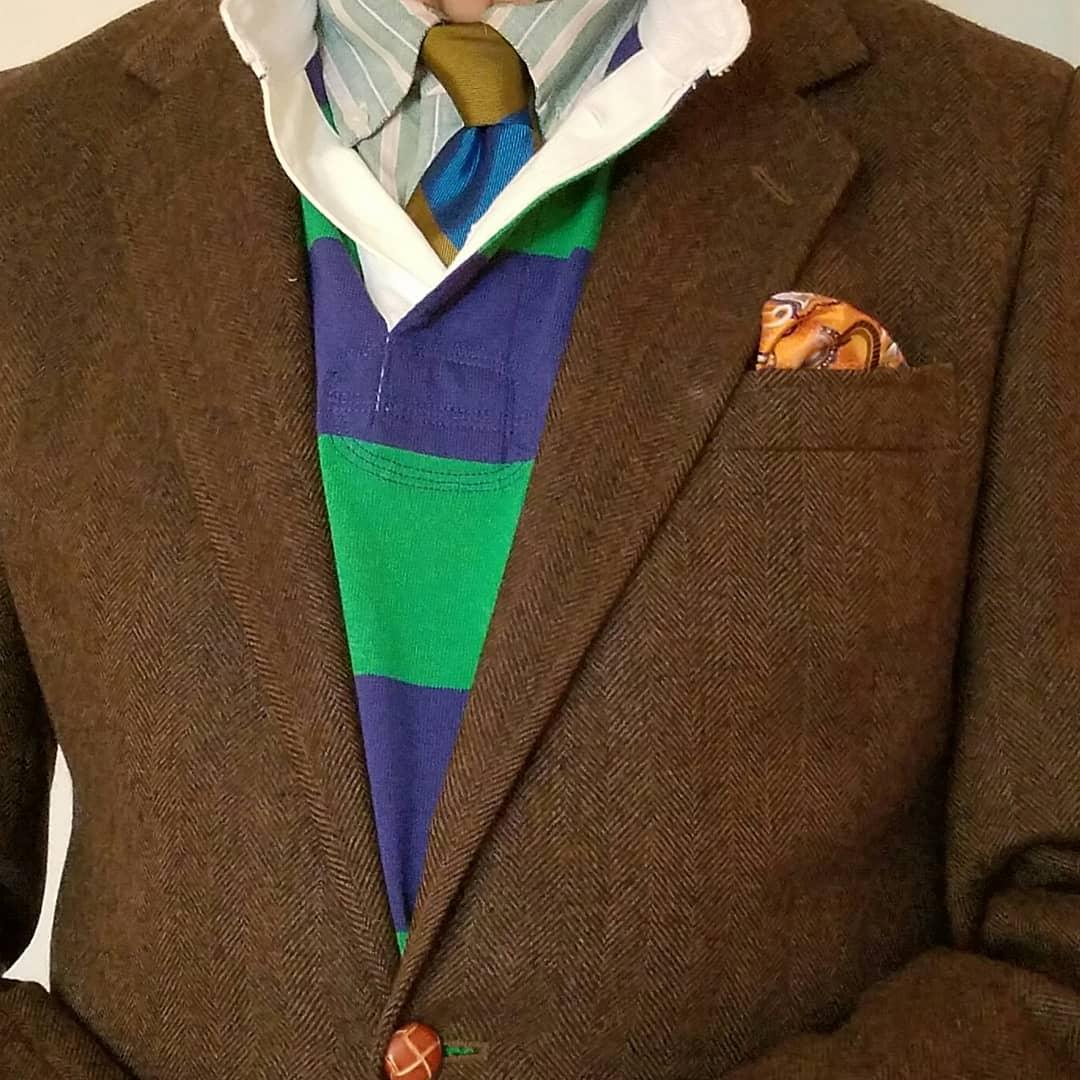Before I delve into today’s post I need to make two things perfectly clear: one, when I make reference to the above styles I am referring to them as they apply to males only; the terms, particularly “Preppy,” have an entirely different meaning as they relate to women’s fashion. Second, I need to emphasize that when I refer to “Preppy” and “Ivy,” I am referring to an International style, or perception of those two styles, that may have little to do with how they are perceived in the United States. So let’s get down to business.
The History of Preppy and Ivy
“Ivy” was a regional style of dress closely associated with the elite Ivy League colleges and universities, which are primarily located in the Northeastern United States. This style began to take form in the early 1900’s as a revolt against the more formal style of dress (e.g. the wearing of suits to classes) that was to be observed on the Ivy League campuses of the time. Thus it was a movement to a less formal and more casual—but not that casual—manner of dress.
The main purveyors of this new trend were two American merchants: Brooks Brothers and J. Press. The former was mainly associated with Harvard University and the latter with Yale University. Initially the Ivy style of dress was influenced by English trends and elite sports. For example the blazer evolved from jackets worn by the rowing teams of elite British universities. And certainly most tweed jackets at the time were imported from the UK. Returning to the theme of elite sports, there were the cricket/tennis sweater, the Rugby shirt and the polo shirt (actually a tennis shirt) and boat shoes, to name a few.


Gradually, the Ivy look became even more casual and more American. For example, there was the introduction of the Oxford cloth button-down shirt (an innovation from Books Brothers). Chinos began to replace gray flannel trousers and penny loafers replaced English Oxford lace-up shoes.
By the mid 1950’s the Ivy look had reached its zenith. And the Brooks Brothers pastel color pallet dominated. Although Ivy was still a regional style limited to mostly college students, it did have a significant influence on mainstream menswear. For example the Ivy single-breasted natural-shoulder sack suit sent the padded shoulder double-breasted business suit into the dustbin.
The Ivy look sailed triumphantly into the 1960’s, but by the middle of that decade, Ivy, as well as the campuses where it was primarily worn, was in disarray. There were big changes socially and politically transforming the U.S., in no small part owing to the very unpopular Viet Nam War. What was needed was someone to pick up the pieces of the disintegrating political and social landscapes. Someone did, sartorially speaking. That someone was Ralph Lauren.
The Importance of Ralph Lauren
Ralph Lauren brought many changes to the world of fashion, but for this discussion, his most important innovation was to take the Ivy Style and put it on steroids. Prior to Lauren, if you wanted that authentic Ivy look, you would have to go to Brooks Brothers or J. Press, which had few stores and fewer still outside of the Northeastern United States. Although Ralph Lauren had few or no stores in the 1970’s, he was able to get his merchandise into major department stores throughout the United States, thereby making his version of the Ivy look more accessible.
The origin of the word “Preppy”
The term “Preppy” became common after it was used in a 1970 film entitled Love Story. In this film the heroine, who came from a working class family, dated a wealthy Harvard student, whom she would describe to her friends as being “preppy” because he had attended a prep school. After that the term “Preppy” supplanted “Ivy” by those who themselves were not part of the Ivy League world.
The Explosion of Preppy in the 1980’s
In the late 1970’s and 1980’s, the U.S. became saturated with shopping malls and new as well as old merchants to fill them. A number of these mall retailers (and new labels) joined Ralph Lauren in supplying a new national craze for “Preppy”; they included J. Crew, Banana Republic, The Gap, Tommy Hilfiger and Lands End. By the end of the 20th Century, however, “Preppy” (and whatever remained of “Ivy”) was dead. Oh, you could still by the clothes, but it no longer was considered fashion forward (for males, that is).
What is Trad?
“Trad,” which stands for “Traditional,” is a term that is used mostly by American males who embrace Preppy or Ivy style or both but prefer not to use those terms to describe their manner of dress. Be aware that in the United States those two terms have pejorative meanings: The former conveys the image of an obnoxious, entitled brat, while the latter brings to mind a snobbish, patrician elite.”
International Preppy and Ivy
When trends and fashions die out in the United States they often find a new life abroad (e.g. Disco and Swing). That is certainly the case with Preppy/Ivy, which has taken on an International identity. So let’s start with International Preppy. What is it?
That’s easy to answer: Anything Ralph Lauren: the more Ralph Lauren you wear, the more Preppy you are.
Earlier I noted that Ralph Lauren took the Ivy look and put it on steroids. So let’s take a look at how that is reflected; in one word it is color. Lauren loves color, and especially bright colors. For example, in the classic Rugby shirt you will often see dark blues and/or dark greens and reds. However, in the Lauren rugby shirt below you will note that the colors are a bright green and a bright blue (royal blue).

With Ralph Lauren you will also see a lot of orange: one of his signature colors. Furthermore, in his tweed or linen jackets, he favors light brown. Thus a gray tweed jacket would be more Ivy than Preppy, although Lauren has sold them in the past. Another Lauren signature characteristic is layers, as you can see below:

I’ve seen International Preppy described disparagingly as Layered and Loud. But for those who like the look (as I do sometimes), they can’t get enough of it. It should be noted that International Preppy has evolved from a purely American phenomenon. Thus the devoted adherents of the style may add brands that are more widely available in their countries than in the U.S., such as Barbour wax jackets and Burberry coats.
International Ivy
For International Ivy, just think Brooks Brothers and its pastel pallet. I would also include J. Press, but I am not sure it’s available outside the United States except by direct order. Of course this look includes all the signature Ivy staples such as oxford cloth button-down shirts, navy blazers, rep ties, tweed jackets (particularly gray) and penny loafers.

Keep in mind that neither style is mutually exclusive, you can mix and match items and labels from both styles. What matters is your attitude. Preppy is more frenetic and in-you-face. Ivy, on the other hand, is more classic and effortless. One is not better than the other: they both can work depending on your individual taste and temperament.
Note:
I am well aware that in the 1950’s and 1960’s in college towns in much of the United States there were stores called Collegiate or University shops. These retailers catered to the young men at the nearby campuses. And I assume that at these establishments you could purchase tweed jackets, navy blazers and Oxford cloth button-down shirts, depending on the tastes in that part of the country. However, I still maintain that Ivy remained a regional style until Ralph Lauren co-opted it in the 1970’s.
